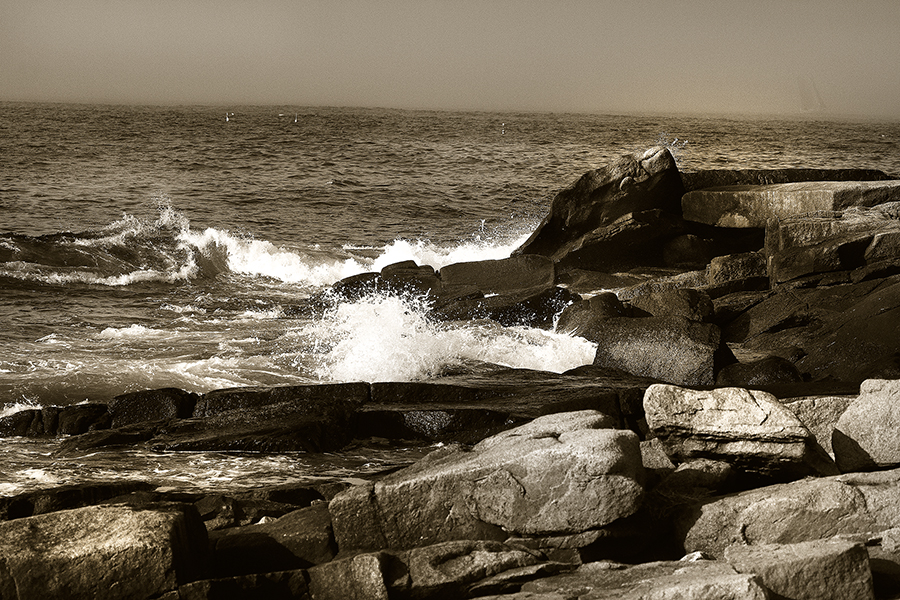
I was standing near sunset this past Saturday at Halibut Point State Park in Gloucester, MA photographing the pounding surf against the beach, and the scene struck me as a kind of “mission accomplished moment.” When I was in high school and college we seemed to worship at Ansel Adams’ feet, wishing that we too could take glorious photographs using the his “zone system.” We didn’t take many family and friends photographs back then. Our goal was chocolatey black and whites, with a nice topping of toxic selenium tone. Today I regret the lack of family and friends images from back then, despite having drawerfuls of photographs, which my wife took with automatic camera taken photographs often of my family growing-up. These out-of-focus muddy colored images were usually ordered in triplicate. But the mediocritization of popular photography was a a separate issue back then. For me the goal was always laser-sharp negatives with my glorious Leica M3 followed by a trip into my chilly and somewhat damp basement darkroom to attempt, but ever to fail, to achieve the master’s talent. I even bought a book on The Zone System for 35 mm Photographers.
There were a lot of technical issues back then – and of course the issue of vision and talent. The beauty of today is that the combination of technology and AI have enabled us to achieve it, at least technically. I emphasize the importance of 14 to 16 bit dynamic range that enables us to tweak the near perfect exposure achieved with modern AI algorithms. I set aside here the question whether true AI can be algorithmic. They are antonymic terms. But, as Ansel taught us, the goal in a photograph is the 7 to 8 bits per color plane of the final photographic print. We can pluck the needed dynamic range out of the dizzying 14 to 16 bits modern cameras afford us. We have total control over the dynamic range, transfer function curves, and toning (in black and white) of the final image.
Despite the self-serving arguments that we make about needed resolution, we are still limited in sharpness. Go stand in front of a giant Ansel Adams print and you’ll see what I mean. Going to an exhibition of Ansel Adams is still a transitional moment! And it changes every time that you do it. Sometimes you are amazed by the tonal range. Sometimes you are amazed by the sharpness. But, and here’s the point, always you are amazed by his talent and vision.
In a sense, it is Mission Accomplished. In another sense we still have so much to learn.
Canon T2i with EF 100-400mm , F/4.5-5.6 L IS USM lens at 100 mm, ISO 1600, 1/4000th sec at f/7.1 with no exposure compensation.
